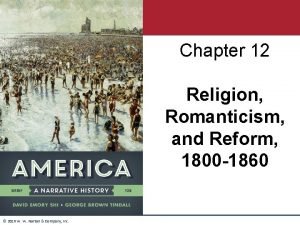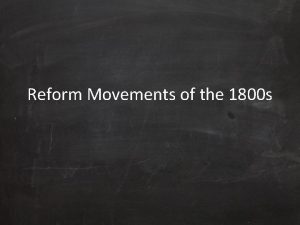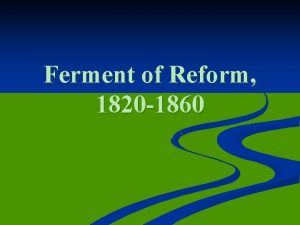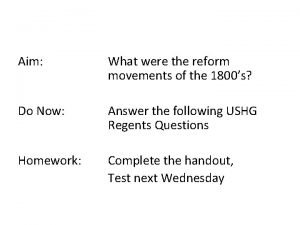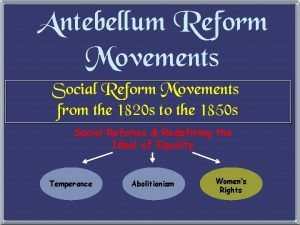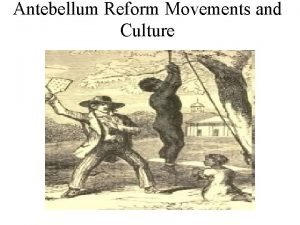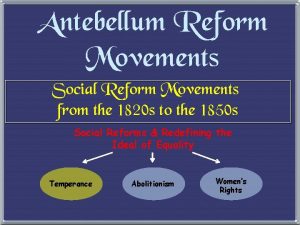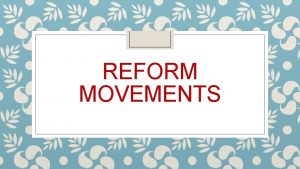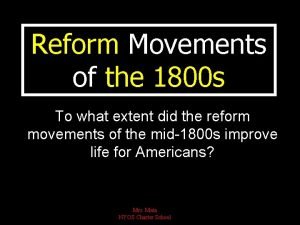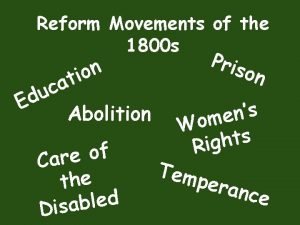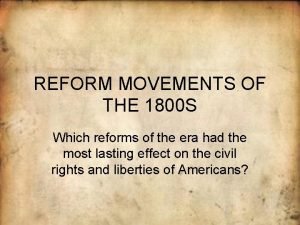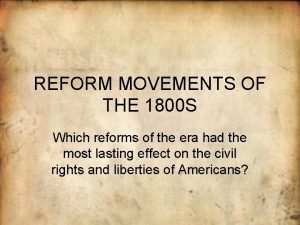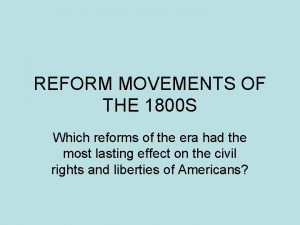Reform Movements The 1800 s A Time of











- Slides: 11

Reform Movements The 1800 s: A Time of Change

Essential Question • Which reform movement do you think had the biggest impact on our present day rights and civil liberties?

The Women’s Rights Movement • Legally and socially inferior: could not vote, married women could not own property or retain their paychecks • Elizabeth Cady Stanton and Lucretia Mott organized the Seneca Falls Convention in New York in 1948 • Declaration of Sentiments called for an end to the unequal treatment of women

The Temperance Movement

The Temperance Movement • A Second Great Awakening occurred; religious leaders believed drinking alcohol was a sin • Rising use of alcohol led to unemployment, workplace absences, and domestic violence. • Ethnic hostilities were also a factor: Irish Catholics were discriminated against people blamed excessive drinking for their “loud and boisterous” behavior • Lyman Beecher, along with women’s groups and church groups, worked to ratify prohibition laws in individual states in the 1840 s. Most states dismantled these laws by the 1860 s. Prohibition was legalized nation-wide in 1920 and repealed in 1933.

Abolition Movement

Abolition Movement • Abolitionists advocated ending slavery. Some abolitionists wanted to make slaves free Americans; others wanted to resettle freed slaves in Africa. • Whites, such as William Lloyd Garrison, and freed blacks, such as Frederick Douglas, worked together. Speeches, rallies, and demonstrations were held. Antislavery books, such as Uncle Tom’s Cabin, and newspaper articles were published in order to sway public opinion. • President Lincoln signed the Emancipation Proclamation in 1863 freeing the slaves in the Confederacy. Slavery officially ended with the 13 th amendment to the Constitution

Public School Reform

Public School Reform • Before the mid-1800 s, no uniform educational policy existed in the United States. • Classrooms were not divided by grade. • Only Vermont and Massachusetts had a compulsory attendance law. • In the 1830 s, Americans began to demand tax-funded public schools. • Horace Mann became the first secretary of the MA Board of Education in 1837. He established teachertraining programs, curriculum reforms, and doubled the money the state of Massachusetts spent on education. Other states began implementing his reform policies.

Prison and Asylum Reform • Prisoners were treated especially cruelly (starvation, beatings) • The mentally ill were often put in prison and did not receive treatment for their mental diagnoses • Dorthea Dix and other reformers emphasized rehabilitation • Between 1845 and 1852, nine states set up public hospitals for the mentally ill

Time to Answer • Which reform movement do you think had the biggest impact on our present day rights and civil liberties?
